Mark Parrish presents his debut photography campaign ‘Prints for Afghanistan’, with a selection of previously unseen images that have been some 45 years in the making.
In 1977, Mark travelled through Afghanistan on a school expedition, taking black and white images on Ilford film using his father’s Canon Canonet and his own Olympus OM1. During his journey from Kabul to the peaks of the Hindu Kush, Mark captured some of the period’s most iconic images. Taken before the unrest of Soviet rule and the resultant Mujahadeen rebellion (which followed mere months after the images were taken), Mark’s pictures depict a country at ease with its traditions, its neighbours, and its place in the world.
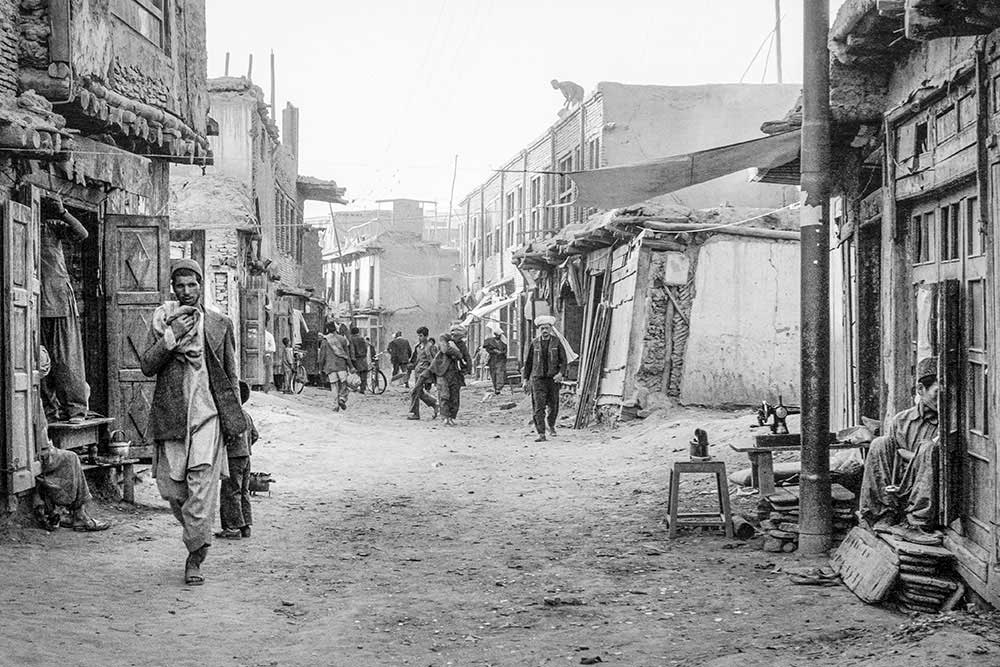
This could have been made in 1877 rather than 1977. Despite American and Russian investment in Afghan infrastructure, much of Kabul remained as it had been for centuries. Alleyways had changed little – shops, workshops, stalls, and warehouses were crammed together in wood and mud buildings and sprawling markets were piled high with wares of every kind, tradesmen shouting and gesturing, the noise and smell of animals mingled with herbs, spices, fruit, vegetables, raw meat and all manner of other products for sale.
In the wake of the Taliban’s recent takeover of Afghanistan and shaken by the horrifying scenes of displacement and desperation that have resulted, Mark has teamed up with his son, Thomas, to clean and re-scan negatives, and to re-touch and release these images in print form to raise money in support of aid efforts on the ground.
A selection of 5 framed archival prints are on sale now for £125 each, or all 5 for £550 with proceeds going to AfghanAid to aid their ‘emergency support to deliver things like food parcels, hygiene kits, kitchen packs, emergency shelter for families who have lost their homes; and financial support for families whose lives have been uprooted by the conflict.’
This project aims to not only raise funds to support these efforts, but also to preserve a memory of Afghanistan unseen in today’s conversations. A memory of a people full of pride and prosperity, uninhibited by war, as it was before.
“I hope these images remind us of the innocence of the Afghan people: as welcoming and peaceful first, in a country torn by war and destruction second.” – Mark Parrish
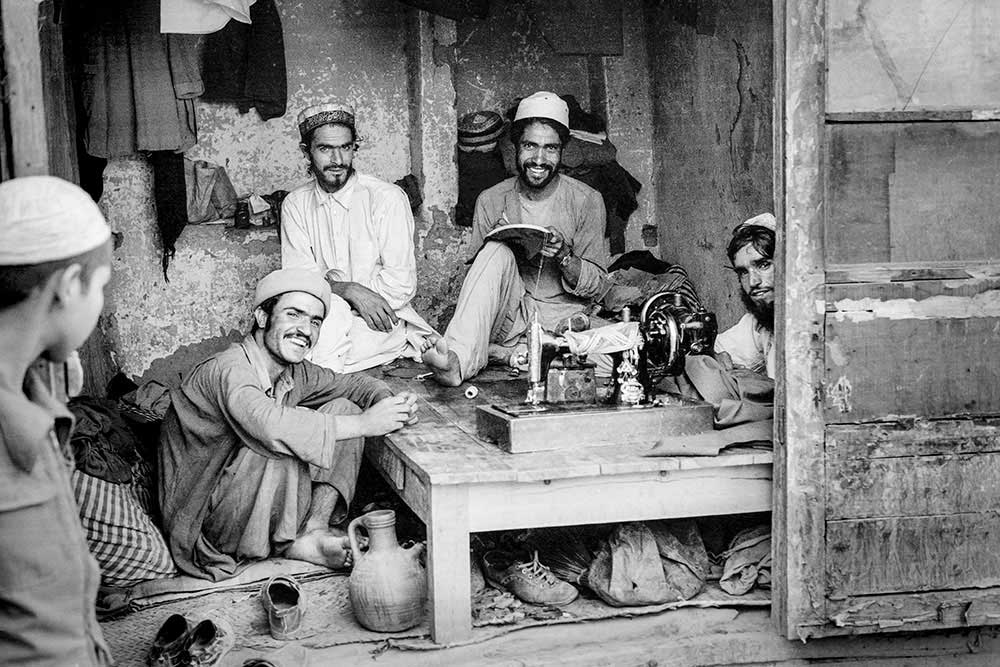
The alleyways of Kabul were an eye opener for a teenager from England: shops, workshops, stalls, and warehouses were crammed together in earth-brown buildings and sprawling markets were piled high with wares of every kind. Trades were clustered in the same area: this tailor was in ‘Sewing Street’, where you could get any clothes repaired or made from a row of similar establishments, small open fronted huts with a sewing machine, cloth optional (you could buy it elsewhere) and more Afghans than seemed capable of squeezing into the space. It made it easy for the customer and competitive for the tradesmen, but didn’t seem to affect their cheerful demeanour and the ever present ‘hey Mister, come to my shop..’ followed by an offer of tea.
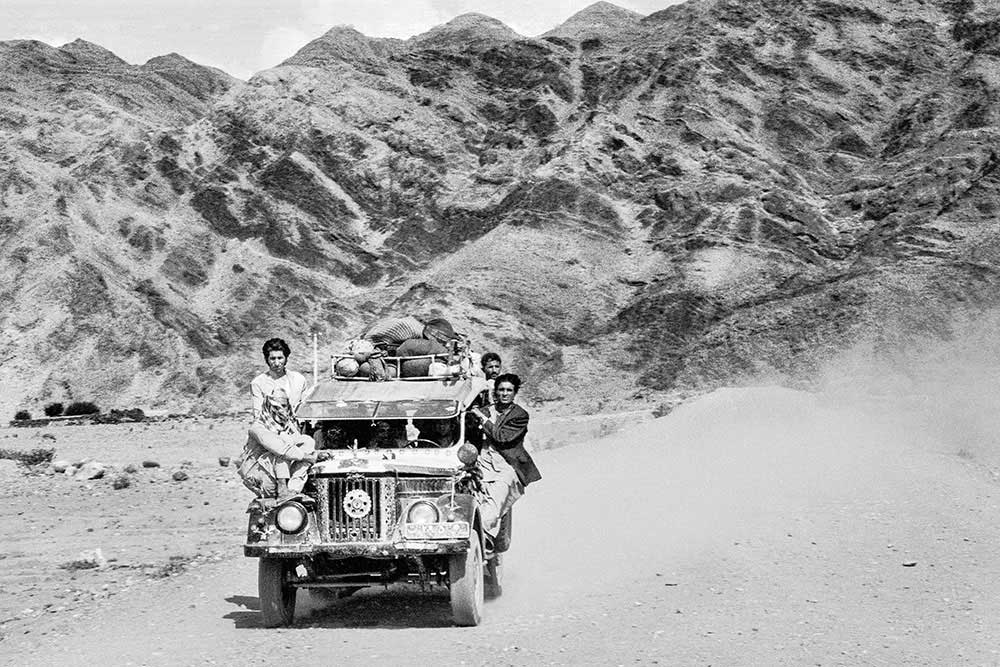
We headed northeast from Kabul into the provinces of Kunar and then Nuristan, the ‘land of light’, previously known as Kafiristan. The foothills of the Hindu Kush appeared in the distance and the tarmacced road was replaced by what was generously described as a ‘stabilised gravel surface’, producing a bumpy ride. So bumpy that our truck battery short circuited and caught fire, causing an impromptu stop. Sitting beside the road while repairing the damage and having a cup of tea we were regularly passed by these ubiquitous Toyota Land Cruisers, the workhorses of the region, covering us in dust while their passengers clung on like limpets, making maximum use of all space.
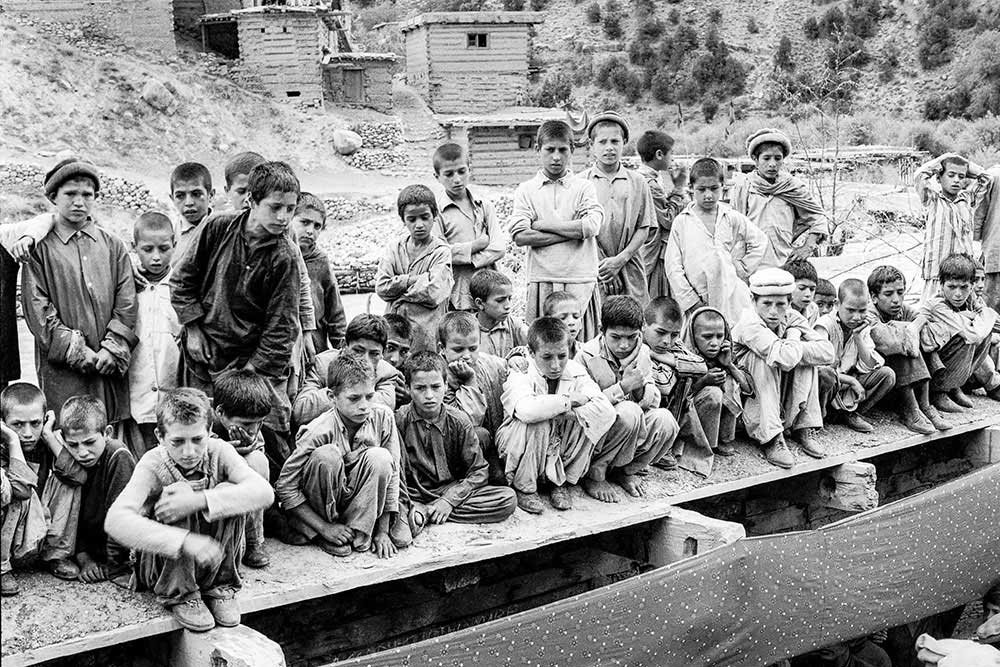
We arrived in Bargematal, the village at the end of the road into Nuristan, on 17 July, the day of celebrations marking the overthrow of the Afghan monarchy in 1973. Our ex-Army Bedford truck was apparently the largest vehicle to ever make it up the road, which explained our average speed of five miles an hour and that we’d destroyed three of our four spare tyres. We were surrounded by crowds of Nuristanis who had travelled to the village for a day of competition and festivities: our arrival added extra interest and excitement to the noise, flag waving, music and smells of roasting food. These children were watching the celebrations from a good vantage point as they could keep an eye on us and the sporting events.
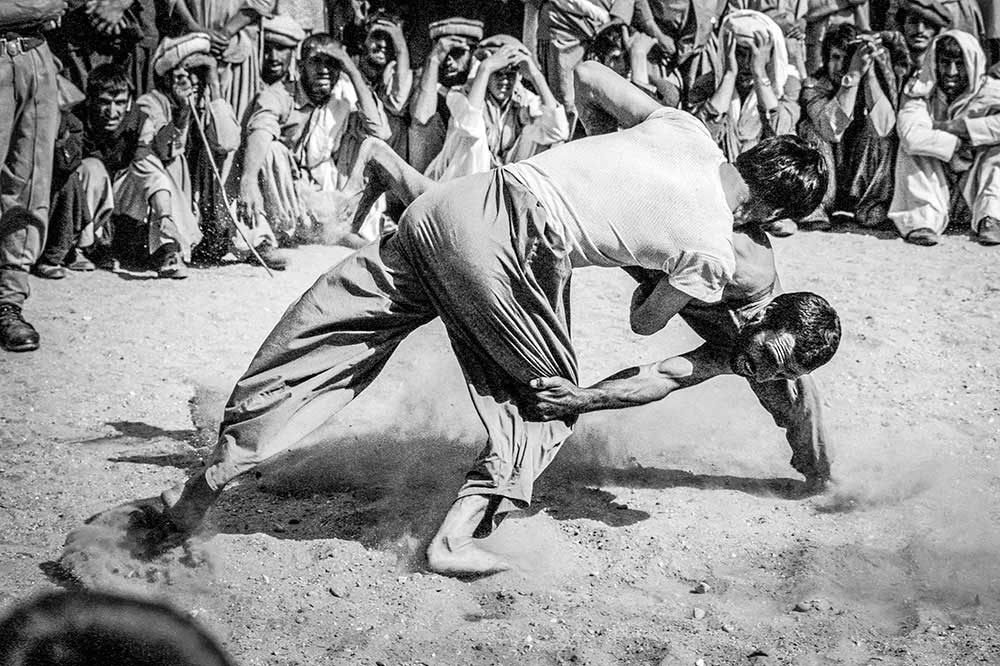
The village of Bargematal was at the end of the road into Nuristan in northeast Afghanistan. We arrived on a public holiday and were greeted by crowds of Nuristanis who had travelled for a day of competition and festivities including dancing, putting the shot (in fact a rock) and wrestling, the wiry Nuristanis excelling with their strength and technique, surrounded by the crowd in Chitrali hats. We entered the competition: our champion was swiftly defeated but his opponent, the judge and the spectators admired the spirit and it helped us be accepted by the community. Russia invaded Afghanistan a year later and many of these villagers would have become mujahideen, making Nuristan almost impregnable for the next 40 years.
About Mark Parrish
Mark is a British/Australian photographer who discovered his love of imagery during his school days in the era of film and fixer. In the decades that have followed, Mark and his cameras have travelled widely, from Afghanistan to India, China to Egypt, Sudan, Pakistan, the Antarctic and beyond, where he has taken some of the regions’ most iconic images.
From expeditions to remote parts of the world to a doctor in two Navies, Mark has combined his career with his love of documentary photography. His photographs depict people and places in a light unseen since the digital takeover.






